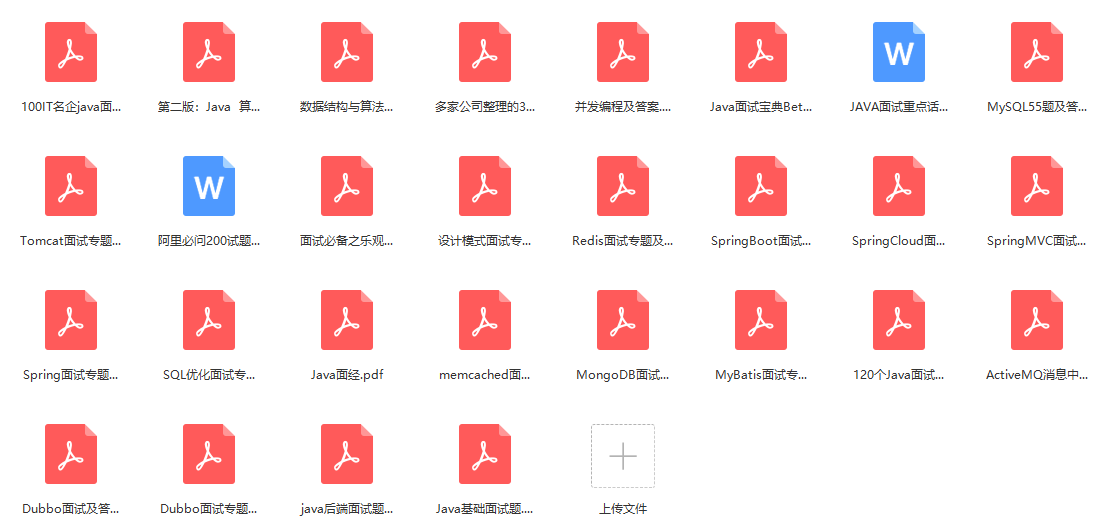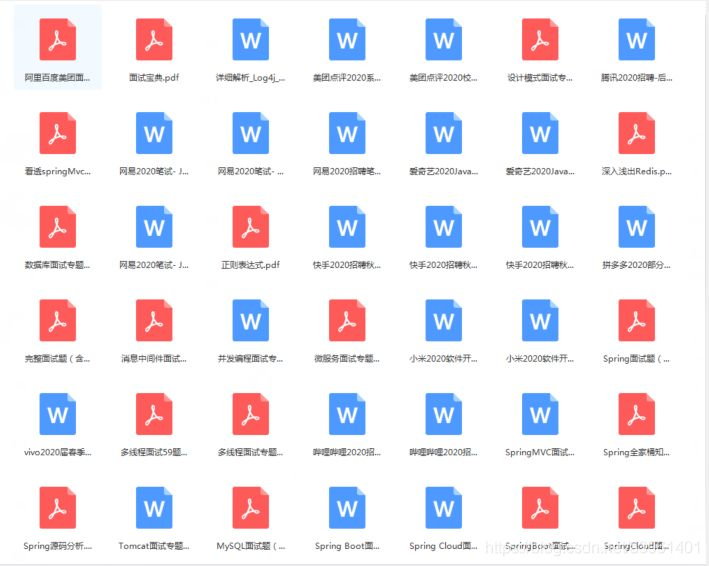目录
1. 糟糕的异步存储文件实现
2. 异常原因推理
3. 问题解决方式
4. spring 清理文件原理
5. tomcat 清理文件原理
最近搞一个文件上传功能,由于文件太大,或者说其中包含了比较多的内容,需要大量逻辑处理。为了优化用户体验,自然想到使用异步来做这件事。也就是说,用户上传完文件后,我就开启另一个线程来处理具体逻辑,主线程就直接返回用户成功信息了。这样就显得非常快了,要看具体结果可以到结果页进行查看。看起来很棒!
然后,我踩坑了。表象就是系统报找不到文件的错误。具体如下!
1.糟糕的异步存储文件实现
为快速起见,我将原来同步的事情,直接改为了异步。如下:
@RestController@RequestMapping("/hello")@Slf4jpublic class HelloController {
@PostMapping("uploadFileWithParam") public Object uploadFileWithParam(HttpServletRequest request, @RequestParam Map<String, Object> params) { log.info("param:{}", params); DefaultMultipartHttpServletRequest multipartRequest = (DefaultMultipartHttpServletRequest) request; MultipartFile file = multipartRequest.getFile("file"); // 原本同步的工作,使用异步完成 new Thread(() -> { // do sth else SleepUtil.sleepMillis(10L); if(file == null || file.isEmpty()) { log.error("文件为空"); return; } try { file.transferTo(new File("/tmp/" + System.currentTimeMillis() + ".dest")); } catch (IOException e) { log.error("文件存储异常", e); } log.info("文件处理完成"); // do sth else }).start(); return "success"; }}
复制代码
看起来挺简单的,实则埋下一大坑。也不是自己不清楚这事,只是一时糊涂,就干了。这会有什么问题?
至少我在本地 debug 的时候,没有问题。然后似乎,如果不去注意上传后的结果,好像一切看起来都很美好。然而,线上预期就很骨感了。上传处理失败,十之八九。
所以,结果就是,处理得快,出错得也快。尴尬不!具体原因,下节详述。
2.异常原因推理
为什么会出现异常?而且我们仔细看其异常信息,就会发现,其报的是文件未找到的异常。
实际也很简单,因为我们是开的异步线程去处理文件的,那么和外部的请求线程不是一起的。而当外部线程处理完业务后,其携带的文件就会被删除。
为什么会被删除呢?我还持有其引用啊,它不应该删除的啊。这么想也不会有问题,因为 GC 时只会清理无用对象。没错,MultipartFile 这个实例我们仍然是持有有效引用的,不会被 GC 掉。但是,其中含有的文件,则不在 GC 的管理范畴了。它并不会因为你还持有 file 这个对象的引用,而不会将文件删除。至少想做这一点是很难的。
所以,总结:请求线程结束后,上传的临时文件会被清理掉。而如果文件处理线程在文件被删除掉之后,再进行处理的话,自然就会报文件找不到的异常了。
同时,也可以解释,为什么我们在 debug 的时候,没有报错了。因为,这是巧合啊。我们在 debug 时,也许刚好遇到子线程先处理文件,然后外部线程才退出。so, 你赢了。
另有一问题:为什么请求线程会将文件删除呢?回答这个问题,我们可以从反面问一下,如果请求线程不清理文件,会怎么样呢?答案是,系统上可能存在的临时文件会越来越多,从而将磁盘搞垮,而这不是一个完美的框架该有的表现。
好了,理解了可能是框架层面做掉了清理这一动作,那么到底是谁干了这事?又是如何干成的呢?我们稍后再讲。附模拟请求 curl 命令:
curl -F 'file=@uptest.txt' -F 'a=1' -F 'b=2' http://localhost:8081/hello/uploadFileWithParam
复制代码
3.问题解决方式
ok, 找到了问题的原因,要解决起来就容易多了。既然异步处理有问题,那么就改成同步处理好了。如下改造:
@RestController@RequestMapping("/hello")@Slf4jpublic class HelloController {
@PostMapping("uploadFileWithParam") public Object uploadFileWithParam(HttpServletRequest request, @RequestParam Map<String, Object> params) { log.info("param:{}", params); DefaultMultipartHttpServletRequest multipartRequest = (DefaultMultipartHttpServletRequest) request; MultipartFile file = multipartRequest.getFile("file"); if(file == null || file.isEmpty()) { log.error("文件为空"); return "file is empty"; } String localFilePath = "/tmp/" + System.currentTimeMillis() + ".dest"; try { file.transferTo(new File(localFilePath)); } catch (IOException e) { log.error("文件存储异常", e); } // 原本同步的工作,使用异步完成 new Thread(() -> { // do sth else SleepUtil.sleepMillis(10L); log.info("从文件:{} 中读取数据,处理业务", localFilePath); log.info("文件处理完成"); // do sth else }).start(); return "success"; }}
复制代码
也就是说,我们将文件存储的这一步,移到了请求线程中去处理了,而其他的流程,则同样在异步线程中处理。有同学可能会问了,你这样做不就又会导致请求线程变慢了,从而回到最初的问题点上了吗?实际上,同学的想法有点多了,对一个文件的转存并不会耗费多少时间,大可不必担心。之所以导致处理慢的原因,更多的是因为我们的业务逻辑太过复杂导致。所以将文件转存放到外部线程,一点问题都没有。而被存储到其他位置的文件,则再不会受到框架管理的影响了。
不过,还有个问题需要注意的是,如果你将文件放在临时目录,如果代码出现了异常,那么文件被框架清理掉,而此时你将其转移走后,代码再出异常,则只能自己承担这责任了。所以,理论上,我们还有一个最终的文件清理方案,比如放在 try ... finnaly ... 进行处理。样例如下:
// 原本同步的工作,使用异步完成 new Thread(() -> { try { // do sth else SleepUtil.sleepMillis(10L); log.info("从文件:{} 中读取数据,处理业务", localFilePath); log.info("文件处理完成"); // do sth else } finally { FileUtils.deleteQuietly(new File(localFilePath)); } }).start();
复制代码
如此,问题解决。
本着问题需要知其然,知其所以然的搬砖态度,我们还需要更深入点。探究框架层面的文件清理实现!请看下节。
4.spring 清理文件原理
很明显,spring 框架轻车熟路,所以必拿其开刀。spring 中清理文件的实现比较直接,就是在将请求分配给业务代码处理完成之后,就立即进行后续清理工作。
其操作是在 org.springframework.web.servlet.DispatcherServlet 中实现的。具体如下:
/** * Process the actual dispatching to the handler. * <p>The handler will be obtained by applying the servlet's HandlerMappings in order. * The HandlerAdapter will be obtained by querying the servlet's installed HandlerAdapters * to find the first that supports the handler class. * <p>All HTTP methods are handled by this method. It's up to HandlerAdapters or handlers * themselves to decide which methods are acceptable. * @param request current HTTP request * @param response current HTTP response * @throws Exception in case of any kind of processing failure */ protected void doDispatch(HttpServletRequest request, HttpServletResponse response) throws Exception { HttpServletRequest processedRequest = request; HandlerExecutionChain mappedHandler = null; boolean multipartRequestParsed = false;
WebAsyncManager asyncManager = WebAsyncUtils.getAsyncManager(request);
try { ModelAndView mv = null; Exception dispatchException = null;
try { // 主动解析MultipartFile文件信息,并使用如 StandardServletMultipartResolver 封装request processedRequest = checkMultipart(request); multipartRequestParsed = (processedRequest != request);
// Determine handler for the current request. mappedHandler = getHandler(processedRequest); if (mappedHandler == null) { noHandlerFound(processedRequest, response); return; }
// Determine handler adapter for the current request. HandlerAdapter ha = getHandlerAdapter(mappedHandler.getHandler());
// Process last-modified header, if supported by the handler. String method = request.getMethod(); boolean isGet = "GET".equals(method); if (isGet || "HEAD".equals(method)) { long lastModified = ha.getLastModified(request, mappedHandler.getHandler()); if (new ServletWebRequest(request, response).checkNotModified(lastModified) && isGet) { return; } }
if (!mappedHandler.applyPreHandle(processedRequest, response)) { return; }
// Actually invoke the handler. mv = ha.handle(processedRequest, response, mappedHandler.getHandler());
if (asyncManager.isConcurrentHandlingStarted()) { return; }
applyDefaultViewName(processedRequest, mv); mappedHandler.applyPostHandle(processedRequest, response, mv); } catch (Exception ex) { dispatchException = ex; } catch (Throwable err) { // As of 4.3, we're processing Errors thrown from handler methods as well, // making them available for @ExceptionHandler methods and other scenarios. dispatchException = new NestedServletException("Handler dispatch failed", err); } processDispatchResult(processedRequest, response, mappedHandler, mv, dispatchException); } catch (Exception ex) { triggerAfterCompletion(processedRequest, response, mappedHandler, ex); } catch (Throwable err) { triggerAfterCompletion(processedRequest, response, mappedHandler, new NestedServletException("Handler processing failed", err)); } finally { if (asyncManager.isConcurrentHandlingStarted()) { // Instead of postHandle and afterCompletion if (mappedHandler != null) { mappedHandler.applyAfterConcurrentHandlingStarted(processedRequest, response); } } else { // 如果是 multipart 文件上传,则做清理动作 // Clean up any resources used by a multipart request. if (multipartRequestParsed) { cleanupMultipart(processedRequest); } } } } /** * Clean up any resources used by the given multipart request (if any). * @param request current HTTP request * @see MultipartResolver#cleanupMultipart */ protected void cleanupMultipart(HttpServletRequest request) { if (this.multipartResolver != null) { MultipartHttpServletRequest multipartRequest = WebUtils.getNativeRequest(request, MultipartHttpServletRequest.class); if (multipartRequest != null) { this.multipartResolver.cleanupMultipart(multipartRequest); } } }
复制代码
值得一提的是,要触发文件的清理动作,需要有两个前提:1. 本次上传的是文件且被正常解析; 2. 配置了正确的文件解析器即 multipartResolver;否则,文件并不会被处理掉。说这事的原因是,在 spring 框架的低版本中,multipartResolver 默认是不配置的,所以此时文件并不会被清理掉。而在高版本或者 springboot 中,该值会被默认配置上。也就是说,如果你不小心踩到了这个坑,你可能是因为中途才配置了这个 resolver 导致。
下面我们再来看下真正的清理动作是如何运行的:
// 1. StandardServletMultipartResolver 的清理实现:直接迭代删除 // org.springframework.web.multipart.support.StandardServletMultipartResolver#cleanupMultipart @Override public void cleanupMultipart(MultipartHttpServletRequest request) { if (!(request instanceof AbstractMultipartHttpServletRequest) || ((AbstractMultipartHttpServletRequest) request).isResolved()) { // To be on the safe side: explicitly delete the parts, // but only actual file parts (for Resin compatibility) try { for (Part part : request.getParts()) { if (request.getFile(part.getName()) != null) { part.delete(); } } } catch (Throwable ex) { LogFactory.getLog(getClass()).warn("Failed to perform cleanup of multipart items", ex); } } } // 2. CommonsMultipartResolver 的清理实现:基于map结构的文件枚举删除 // org.springframework.web.multipart.commons.CommonsMultipartResolver#cleanupMultipart @Override public void cleanupMultipart(MultipartHttpServletRequest request) { if (!(request instanceof AbstractMultipartHttpServletRequest) || ((AbstractMultipartHttpServletRequest) request).isResolved()) { try { cleanupFileItems(request.getMultiFileMap()); } catch (Throwable ex) { logger.warn("Failed to perform multipart cleanup for servlet request", ex); } } } /** * Cleanup the Spring MultipartFiles created during multipart parsing, * potentially holding temporary data on disk. * <p>Deletes the underlying Commons FileItem instances. * @param multipartFiles a Collection of MultipartFile instances * @see org.apache.commons.fileupload.FileItem#delete() */ protected void cleanupFileItems(MultiValueMap<String, MultipartFile> multipartFiles) { for (List<MultipartFile> files : multipartFiles.values()) { for (MultipartFile file : files) { if (file instanceof CommonsMultipartFile) { CommonsMultipartFile cmf = (CommonsMultipartFile) file; cmf.getFileItem().delete(); LogFormatUtils.traceDebug(logger, traceOn -> "Cleaning up part '" + cmf.getName() + "', filename '" + cmf.getOriginalFilename() + "'" + (traceOn ? ", stored " + cmf.getStorageDescription() : "")); } } } }
复制代码
所以,同样的事情,我们的做法往往是多种的。所以,千万不要拘泥于某一种实现无法自拔,更多的,是需要我们有一个全局框架思维。从而不至于迷失自己。
5.Tomact 清理文件原理
如上,spring 在某些情况下是不会做清理动作的,那么如果此时我们的业务代码出现了问题,这些临时文件又当如何呢?难道就任其占用我们的磁盘空间?实际上,spring 仅是一个应用框架,在其背后还需要有应用容器,如 tomcat, netty, websphere...
那么,在应用框架没有完成一些工作时,这些背后的容器是否应该有所作为呢?这应该是必须的,同样,是一个好的应用容器该有的样子。那么,我们看下 tomcat 是如何实现的呢?
然而事实上,tomcat 并不会主动清理这些临时文件,因为不知道业务,不知道清理时机,所以不敢轻举妄动。但是,它会在重新部署的时候,去清理这些临时文件哟(java.io.tmpdir 配置值)。也就是说,这些临时文件,至多可以保留到下一次重新部署的时间。
// org.apache.catalina.startup.ContextConfig#beforeStart /** * Process a "before start" event for this Context. */ protected synchronized void beforeStart() {
try { fixDocBase(); } catch (IOException e) { log.error(sm.getString( "contextConfig.fixDocBase", context.getName()), e); }
antiLocking(); }
// org.apache.catalina.startup.ContextConfig#antiLocking protected void antiLocking() {
if ((context instanceof StandardContext) && ((StandardContext) context).getAntiResourceLocking()) {
Host host = (Host) context.getParent(); String docBase = context.getDocBase(); if (docBase == null) { return; } originalDocBase = docBase;
File docBaseFile = new File(docBase); if (!docBaseFile.isAbsolute()) { docBaseFile = new File(host.getAppBaseFile(), docBase); }
String path = context.getPath(); if (path == null) { return; } ContextName cn = new ContextName(path, context.getWebappVersion()); docBase = cn.getBaseName();
if (originalDocBase.toLowerCase(Locale.ENGLISH).endsWith(".war")) { antiLockingDocBase = new File( System.getProperty("java.io.tmpdir"), deploymentCount++ + "-" + docBase + ".war"); } else { antiLockingDocBase = new File( System.getProperty("java.io.tmpdir"), deploymentCount++ + "-" + docBase); } antiLockingDocBase = antiLockingDocBase.getAbsoluteFile();
if (log.isDebugEnabled()) { log.debug("Anti locking context[" + context.getName() + "] setting docBase to " + antiLockingDocBase.getPath()); } // 清理临时文件夹 // Cleanup just in case an old deployment is lying around ExpandWar.delete(antiLockingDocBase); if (ExpandWar.copy(docBaseFile, antiLockingDocBase)) { context.setDocBase(antiLockingDocBase.getPath()); } } }
// org.apache.catalina.startup.ExpandWar#delete public static boolean delete(File dir) { // Log failure by default return delete(dir, true); } public static boolean delete(File dir, boolean logFailure) { boolean result; if (dir.isDirectory()) { result = deleteDir(dir, logFailure); } else { if (dir.exists()) { result = dir.delete(); } else { result = true; } } if (logFailure && !result) { log.error(sm.getString( "expandWar.deleteFailed", dir.getAbsolutePath())); } return result; }
复制代码
嗨,tomcat 不干这活。自己干吧!默认把临时文件放到系统的临时目录,由操作系统去辅助清理该文件夹,何其轻松。
最后,小编也整理出来了一份面试宝典,也希望对你们也有点用哦,想要领取的添加小编的 vx:mxzFAFAFA 即可领取!















评论